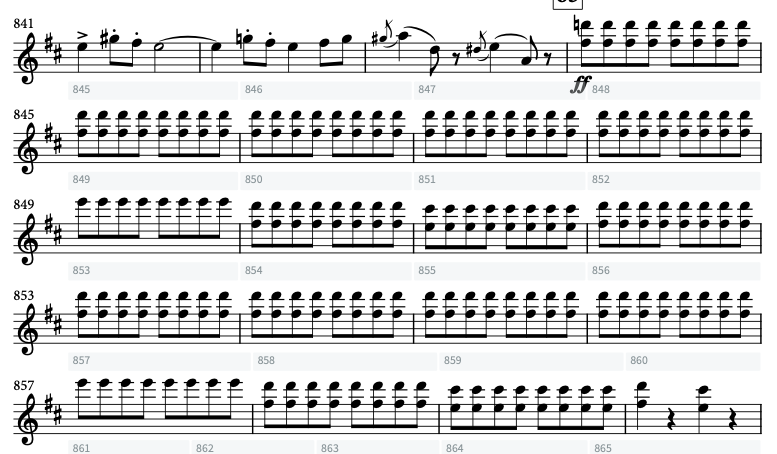These eighths were entered as such into the score, partly because the original was this way, but it would certainly save room if I could replace these with the shorthand: four eighths = one half with a slash. I have a lot of them to change. Is there by any chance a quicker way of doing this in Dorico than just pressing backspace three times and then selecting the one stroke single note tremolo?
I can’t see the image (is there an image?) but my guess is you should be able to select the whole passage, hit 7, and then apply the tremolo to all selected minims/half notes in one go.
I’d select the first note, press 7, shift-R and 1. No backspace key involved.
Leo you beat me again ![]()
I have a lot of passages like this one in which I’d prefer to have two slashed half notes per bar. I have to change existing bars.
Yeah, so select the whole passage from 844 to 859, hit 7, apply the tremolo. Much quicker than doing them one at a time.
Aha, sorry about this. I’m still not used to the way Dorico works. Incredible! I can indeed do everything in one go. I’m really glad I asked! Thanks again, Leo and Marc!
I have another question about this sort of thing. How do I do the above but this time with triplet 16ths?

Thanks again, Leo. I remember there was a whole discussion on another forum about using dotted notes (i.e. no hidden tuplets), the way Brahms and a number of other composers notated three repeated notes. One could argue that when including the ‘3’ it may be redundant, but it is what a lot of orchestral musicians are used to seeing. What’s the consensus here?
IM(H?)O Brahms was right, using dotted notes. A dotted note precisely conveys the ‘triple-ness’, better than the tuplet number alone, which I’d find quite ambiguous and easy to miss, if written on a measured tremolo that looks exactly like its binary counterpart, especially if you’d like to omit the numbers after the first two or three, as in Vaughan’s example.
